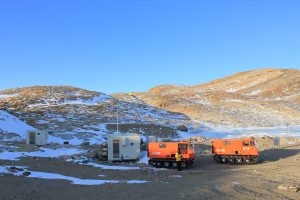 Japanese Yukidori Hut (69°00’30”South, 39°46’00”East) about 20 km to the South from Syowa base (WAP JPN-Ø3), it’s a site for observation and scientific measurement such as geosphere and marine life. Yukidori is Japanese for “snow petrel”.
Japanese Yukidori Hut (69°00’30”South, 39°46’00”East) about 20 km to the South from Syowa base (WAP JPN-Ø3), it’s a site for observation and scientific measurement such as geosphere and marine life. Yukidori is Japanese for “snow petrel”.
Yukidori Biological Research Hut will be added as “New Entry” on WAP –WADA Directory
Yukidori Valley situated in the middle part of Langhovde, on the East coast of Lützow-Holm Bay, Continental Antarctica, contains a prominent melt stream and two lakes.
The Biological Research Hut was constructed in 1986 near the beach at the mouth of the Valley so that there would be minimal impact on the flora, fauna, and terrain of the Area.
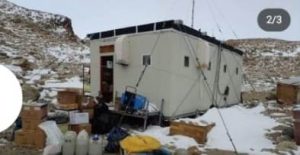 A typical continental fellfield ecosystem has developed in this Valley. Since 1984, the long-term monitoring program has continue dover here, in particolar, to monitor temporal and spatial changes in vegetation of mosses and lichens. To ensure adequate protection and monitoring of these ecosystems, the area of Yukitorisawa has been designated as Antarctic Specially Protected Area (ASPA) No.141 in 2002, under the Antarctic environmental protection act.
A typical continental fellfield ecosystem has developed in this Valley. Since 1984, the long-term monitoring program has continue dover here, in particolar, to monitor temporal and spatial changes in vegetation of mosses and lichens. To ensure adequate protection and monitoring of these ecosystems, the area of Yukitorisawa has been designated as Antarctic Specially Protected Area (ASPA) No.141 in 2002, under the Antarctic environmental protection act.
Langhovde Glacier (69°13’ South, 39°48’ East) is a glacier at the Est side of the Langhovde Hills, flowing north to Hovde Bay on the east shore of Lutzow-Holm Bay, Antarctica. It was mapped from surveys and air photos by the Japanese 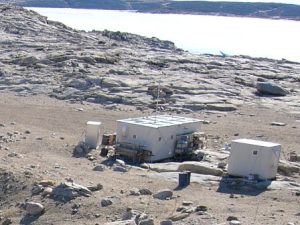 Antarctic research Expedition 1957–62, and named for its proximity to the Langhovde Hills.
Antarctic research Expedition 1957–62, and named for its proximity to the Langhovde Hills.
Read more at: 141.pdf (env.go.jp). Entry into the Area is prohibited except pedestrians with the Permit holder. No living animals and plants or microorganisms, poultry products, uncooked dried eggs, herticices nor pesticides shall be deliberately introduced into the Area. The pedestrians should avoid walking on vegetated area or disturbance to birds and natural features.
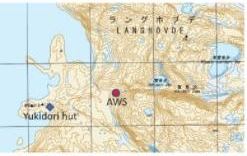
The location of the Area and its boundaries are shown on the attached map.
Yukidori Hut, which serves as the business base, has a generator so that electricity is available. There is also a freezer for storing the processing collected samples. There are also four beds where researchers can live while continuing their studies.
Read more at: https://www.env.go.jp/nature/nankyoku/message/articles/09.html
At the light of these evidences, Yukidori Biological Research Hut (69°00’30” South, 39°46’00” East) at Yukidoi Valley, Queen Maud land, East Antarctica, will enter into the WAP-WADA Directory as WAP JPN-NEW
TNX Yath Yoshikawa JG2MLI, Takumi Kondo JG3PLH and Gabry IK1NEG
 ARI-Sanremo ARISanremo – Associazione Radioamatori Italiani is doing a great job in managing the Diplomas available for free.
ARI-Sanremo ARISanremo – Associazione Radioamatori Italiani is doing a great job in managing the Diplomas available for free.

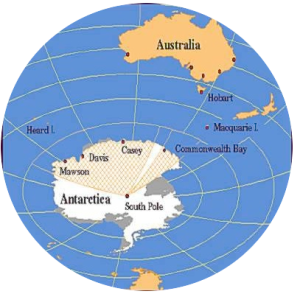 The Australian government has cancelled the proposed aerodrome near Davis Sation (
The Australian government has cancelled the proposed aerodrome near Davis Sation (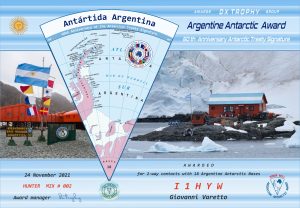 There are two kinds of ARGENTINA ANTARCTIC AWARD available in CW, SSB, DIGI, MIX (CW/SSB), ALL (CW / SSB / DIGI) for two-way QSO’s / SWL’s with various Argentine stations locatewd below 60° South, in Antarctica, in any period of time on any bands.
There are two kinds of ARGENTINA ANTARCTIC AWARD available in CW, SSB, DIGI, MIX (CW/SSB), ALL (CW / SSB / DIGI) for two-way QSO’s / SWL’s with various Argentine stations locatewd below 60° South, in Antarctica, in any period of time on any bands.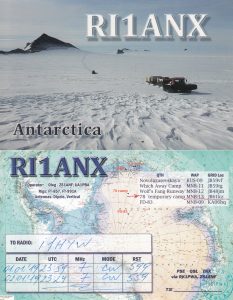 Also known as 78 Temporary Camp (other then Traverse Stop Point ),
Also known as 78 Temporary Camp (other then Traverse Stop Point ), 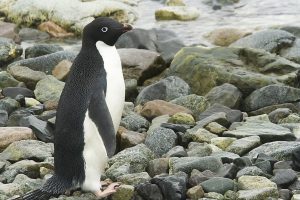 An Adélie penguin that washed up on a rocky New Zealand beach — nearly 2,000 miles (3,218 kilometers) from its home in Antarctica — last week, has been released back into the wild, experts say.
An Adélie penguin that washed up on a rocky New Zealand beach — nearly 2,000 miles (3,218 kilometers) from its home in Antarctica — last week, has been released back into the wild, experts say. Captain Preet Chandi did embark November 7 on the long voyage to Antarctica. Once there, she hopes to become the first woman of color to ski solo and unsupported to the South Pole. According to the latest
Captain Preet Chandi did embark November 7 on the long voyage to Antarctica. Once there, she hopes to become the first woman of color to ski solo and unsupported to the South Pole. According to the latest 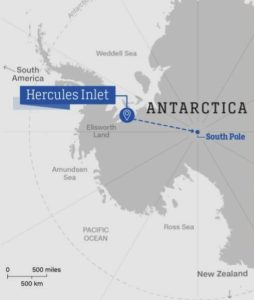 The sun will never set but temperatures could dip as low as minus 50 Celsius (minus 58 Fahrenheit) with wind chill. Her only contact with the outside world will be a daily check-in with her support team.
The sun will never set but temperatures could dip as low as minus 50 Celsius (minus 58 Fahrenheit) with wind chill. Her only contact with the outside world will be a daily check-in with her support team.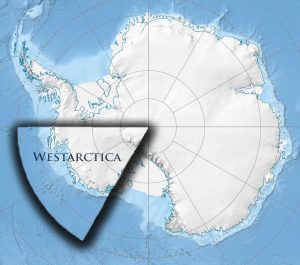 In 2001 Travis McHenry laid claim to the largest contiguous portion of the nation by filing a claimant letter with the nine world governments that have also expressed legal claims of ownership to portions of the continent (though none to the sector claimed by McHenry). The territory consists mostly of Marie Byrd Land and a large proportion of Ellsworth Land. It has no year round residents, although seasonal Research Stations are located in the region. The nation of Westarctica was founded through a loophole in the Antarctic Treaty. (Source:
In 2001 Travis McHenry laid claim to the largest contiguous portion of the nation by filing a claimant letter with the nine world governments that have also expressed legal claims of ownership to portions of the continent (though none to the sector claimed by McHenry). The territory consists mostly of Marie Byrd Land and a large proportion of Ellsworth Land. It has no year round residents, although seasonal Research Stations are located in the region. The nation of Westarctica was founded through a loophole in the Antarctic Treaty. (Source: 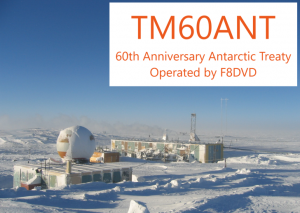 François, F8DVD, will operate TM6ØANT to commemorate the 6Øth Anniversary of Antarctic Treaty Signature.
François, F8DVD, will operate TM6ØANT to commemorate the 6Øth Anniversary of Antarctic Treaty Signature.
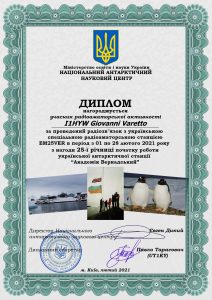 Located on the tiny island of Galindez in the Antarctic Circle, the Vernadsky Station (
Located on the tiny island of Galindez in the Antarctic Circle, the Vernadsky Station ( China’s research icebreaker Xuelong, or Snow Dragon, set off from Shanghai on on Friday Nov 5, marking the start of the Country’s 38th Antarctic expedition.
China’s research icebreaker Xuelong, or Snow Dragon, set off from Shanghai on on Friday Nov 5, marking the start of the Country’s 38th Antarctic expedition. A UC research project evaluating the feasibility of hydrogen production in Antarctica could help to reduce carbon emissions in the future by replacing fossil fuels with a zero-carbon alternative.
A UC research project evaluating the feasibility of hydrogen production in Antarctica could help to reduce carbon emissions in the future by replacing fossil fuels with a zero-carbon alternative. Japanese Yukidori Hut (69°00’30”South, 39°46’00”East) about 20 km to the South from Syowa base (WAP JPN-Ø3), it’s a site for observation and scientific measurement such as geosphere and marine life. Yukidori is Japanese for “snow petrel”.
Japanese Yukidori Hut (69°00’30”South, 39°46’00”East) about 20 km to the South from Syowa base (WAP JPN-Ø3), it’s a site for observation and scientific measurement such as geosphere and marine life. Yukidori is Japanese for “snow petrel”. A typical continental fellfield ecosystem has developed in this Valley. Since 1984, the long-term monitoring program has continue dover here, in particolar, to monitor temporal and spatial changes in vegetation of mosses and lichens. To ensure adequate protection and monitoring of these ecosystems, the area of Yukitorisawa has been designated as Antarctic Specially Protected Area (ASPA) No.141 in 2002, under the Antarctic environmental protection act.
A typical continental fellfield ecosystem has developed in this Valley. Since 1984, the long-term monitoring program has continue dover here, in particolar, to monitor temporal and spatial changes in vegetation of mosses and lichens. To ensure adequate protection and monitoring of these ecosystems, the area of Yukitorisawa has been designated as Antarctic Specially Protected Area (ASPA) No.141 in 2002, under the Antarctic environmental protection act. Antarctic research Expedition 1957–62, and named for its proximity to the Langhovde Hills.
Antarctic research Expedition 1957–62, and named for its proximity to the Langhovde Hills.
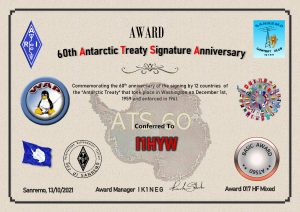 Just take a look at the numbers of Awards issued by the various Countries that have join the initiative, to realize this!
Just take a look at the numbers of Awards issued by the various Countries that have join the initiative, to realize this!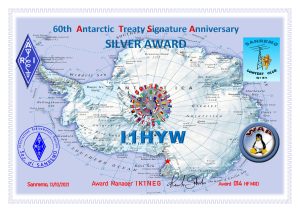 to log a QSO with the Continent that has always fascinated us, and to which, the most exciting pages of the South Pole exploration are linked.
to log a QSO with the Continent that has always fascinated us, and to which, the most exciting pages of the South Pole exploration are linked.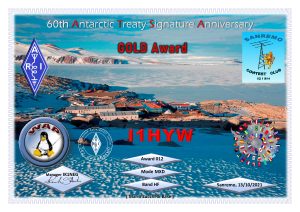 Returning to the 6Øth ATS (
Returning to the 6Øth ATS (